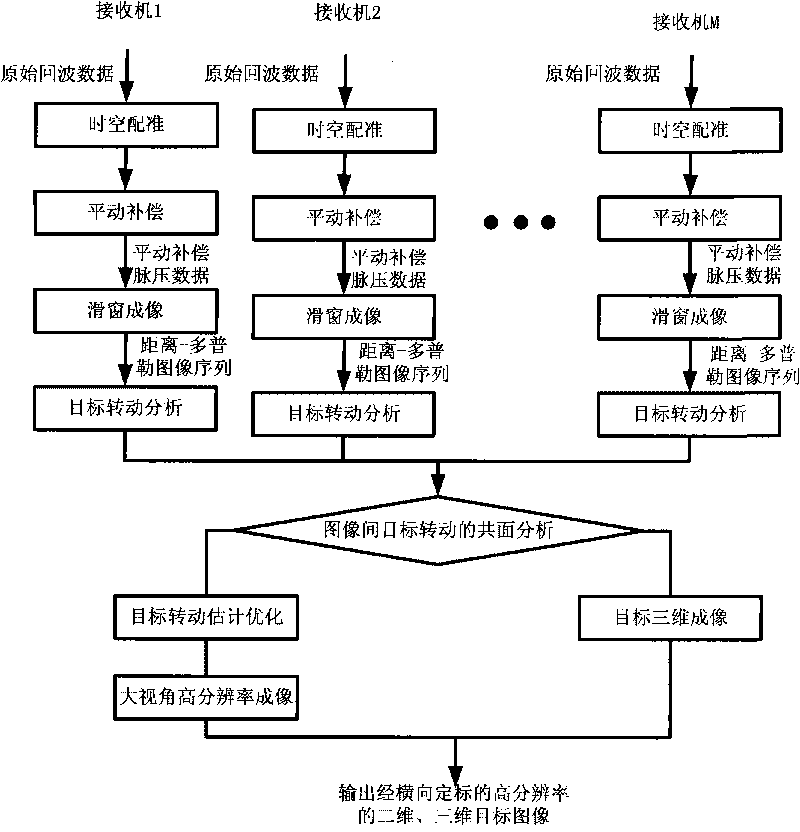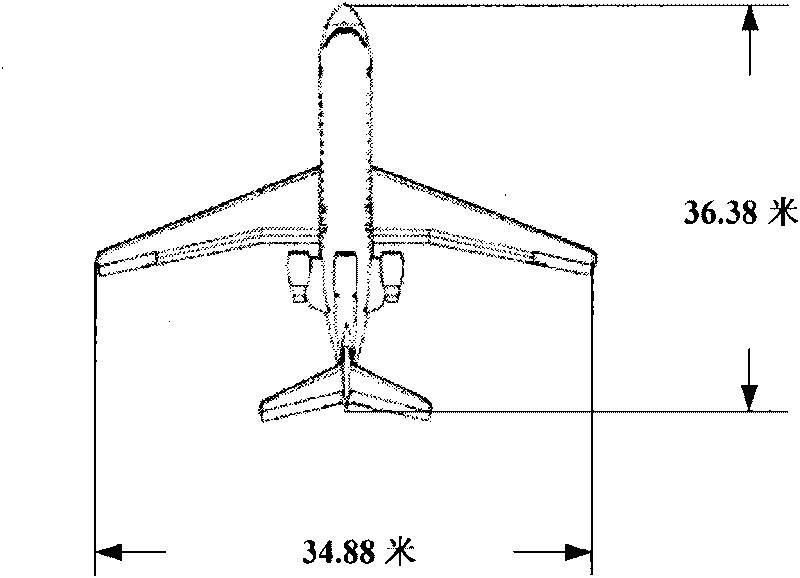Method for estimating target rotation of inverse synthetic aperture radar based on time-space image sequence
An inverse synthetic aperture and image sequence technology, applied in the radar field, can solve the problems of low lateral resolution of ISAR radar images, difficulty and inaccuracy in the extraction of multi-view imaging information, and achieve easy engineering implementation, ensure accuracy and stability, The effect of small amount of computation
- Summary
- Abstract
- Description
- Claims
- Application Information
AI Technical Summary
Problems solved by technology
Method used
Image
Examples
Embodiment 1
[0042] In an embodiment of the present invention, the method described in the present invention uses the data provided by a certain experimental ISAR system in my country to process, figure 2 An aircraft target model is shown as the object of calibration in this embodiment. In the experimental ISAR system, the radar carrier frequency is 5.52GHz; the chirp signal is transmitted with a bandwidth of 400MHz; the pulse compression signal is obtained by Dechirp mode, and the quadrature I / Q dual-channel sampling is performed, and the sampling frequency is 10MHz; the equivalent pulse repetition The frequency is 200Hz; 1024 pulses are obtained for processing.
[0043] During the acquisition process of a batch of target image data, the rotation vector of the radar relative to the target remains approximately constant, that is, the rotation center, rotation direction and rotation speed remain unchanged. According to the basic principle of radar imaging, range-Doppler imaging is perform...
Embodiment 2
[0095] In the second embodiment of the present invention, after target translation compensation, under plane wave illumination, the high resolution along the radar line-of-sight direction (distance direction) is obtained by processing the broadband echo of the target; The Doppler frequency information of the wave forms high resolution across distance.
[0096] Figure 5 is a schematic diagram of inverse synthetic aperture radar imaging based on the rotating body model; Figure 5 As shown, assume that after the translation compensation, the target is at ω o Rotate at a constant speed, then a point on the target (x o ,y o ) to the radar antenna phase center (APC) instantaneous distance can be expressed as:
[0097] r = [ r o 2 + r a 2 - 2 ...
Embodiment 3
[0135] like Image 6 As shown, the original data received by the two radars are equally divided on the time axis, and two RD images are obtained respectively. For example, the data received by radar A are A1 and A2, and the data received by radar B are B1 and B2. The specific acquisition and application are described below.
[0136] After the translation compensation as mentioned above, the target with ω o Rotate at a constant speed, then a point on the target (x o ,y o ) to the antenna phase center (APC) of radar A and radar B can be expressed as:
[0137] R A ( t m ) = R AO 2 + r o 2 - 2 R AO r o cos ( ...
PUM
 Login to View More
Login to View More Abstract
Description
Claims
Application Information
 Login to View More
Login to View More - R&D
- Intellectual Property
- Life Sciences
- Materials
- Tech Scout
- Unparalleled Data Quality
- Higher Quality Content
- 60% Fewer Hallucinations
Browse by: Latest US Patents, China's latest patents, Technical Efficacy Thesaurus, Application Domain, Technology Topic, Popular Technical Reports.
© 2025 PatSnap. All rights reserved.Legal|Privacy policy|Modern Slavery Act Transparency Statement|Sitemap|About US| Contact US: help@patsnap.com



